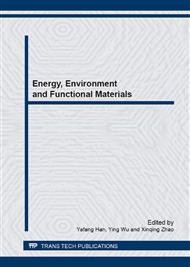p.164
p.171
p.176
p.184
p.195
p.198
p.205
p.210
p.215
Revisit of Thermoelectric Efficiency and Figure-of-Merit
Abstract:
Thermoelectric efficiency power generation represented based on the transportation equations obtained under different physical boundary conditions in the present investigation. The figure-of-merit and power factor derived from optimizing thermoelectric efficiency and maximizing power output. It is interesting to note that the maximum output power reached when the load resistance was the thermoelectric adiabatic resistance, while the optimized thermoelectric efficiency responded the isothermal resistance. The possible approach to characterizing these thermoelectric parameters proposed in the present investigation.
Info:
Periodical:
Pages:
195-197
Citation:
Online since:
April 2014
Authors:
Price:
Сopyright:
© 2014 Trans Tech Publications Ltd. All Rights Reserved
Share:
Citation:


